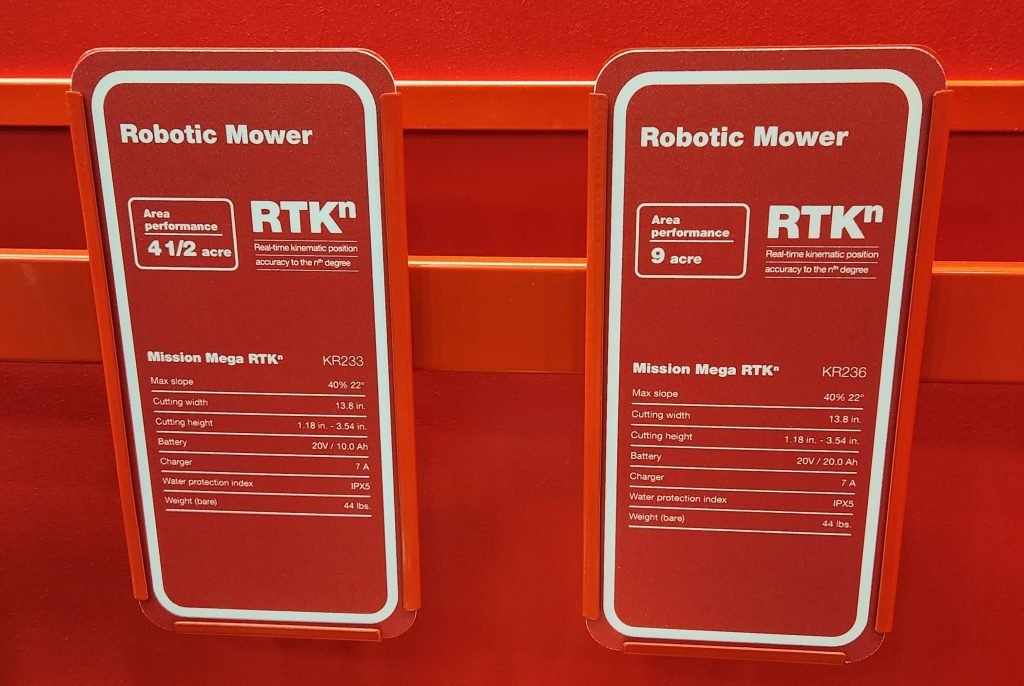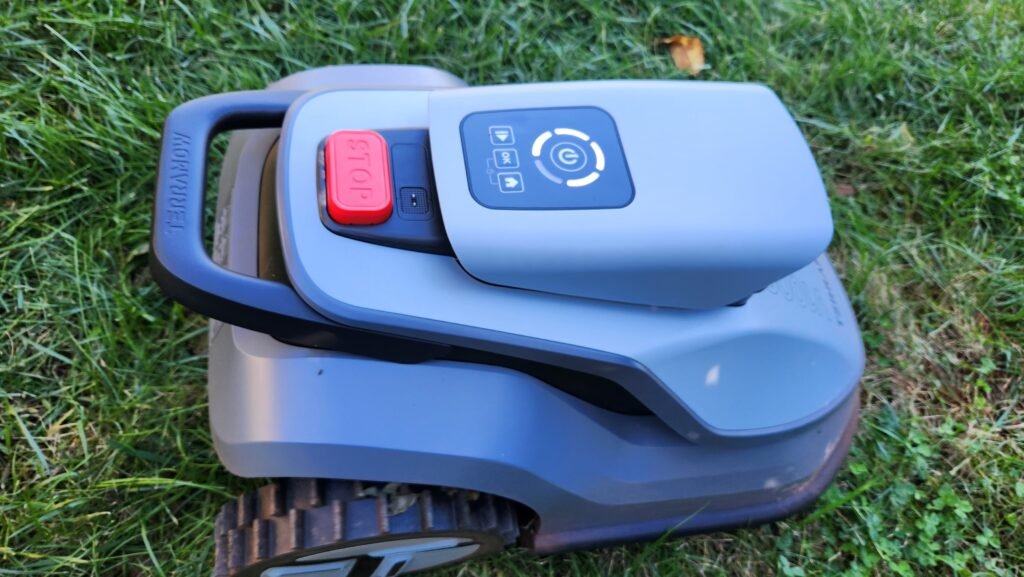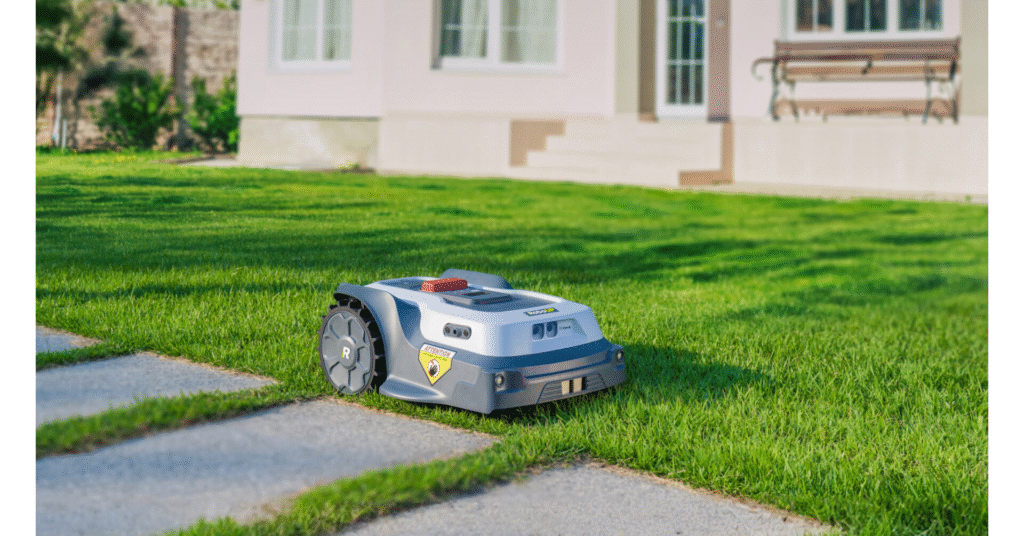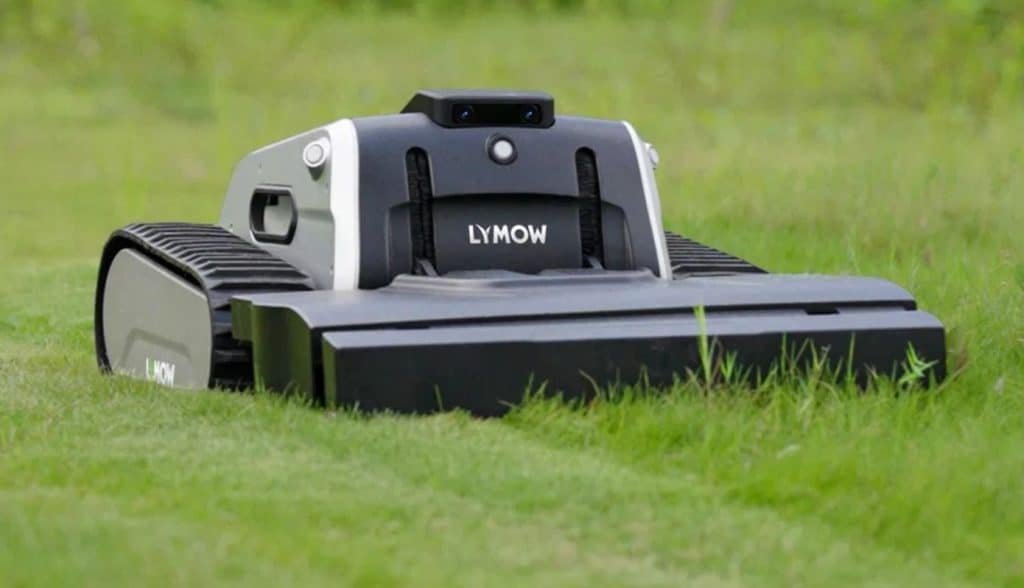There’s currently no shortage of home robot mowers entering the market. It seems a new mower launches almost every week. Sometimes these are from big brands and other times they are small robotic start-ups or Kickstarter campaigns.
But for the most part, the home market has seen the most growth in different brands. Commercial mowers are available, but the overall number of mowers available is somewhat smaller.
Kress has done an interesting job with its product line as their models bridge the gap between home use and commercial use. Their smaller units are perfect for most home applications, but larger models are ideal for commercial properties such as athletic fields.
Kress also boasts some impressive technology with their line of mowers and they promise it will make you forget about considering a perimeter wire mower.
Below, we’ll review the Kress RTKn line of mowers and see if they deliver on their promise
Who is Kress?
Kress has been a brand in lawn and garden equipment for several decades. They mostly focused on electric equipment and became a well-known brand in Europe.
In North America, the brand was acquired by the Positec Group, which also owns Worx, which makes its own line of robot mowers.
Kress shares some of that manufacturing and design history and has used it to create a new line of mowers under their own brand.

The Kress RTKn Line of Robot Mowers
The RTKn line of robot mowers is made up of 5 mowers in total. The mowers all use the same technology and their range is what sets them apart.
Kress Mission RTKn Models:
- Kress Mission 3/4 acre – $3299
- Kress Mission 1-1/4 acre – $4199
- Kress Mission 1-3/4 acre – $5199
- Kress Mission Mega 4.5 acre – $10,799
- Kress Mission Mega 9 acre – $13,799
Kress Mission RTKn Navigation
As with all robot mowers, how they navigate your lawn is a key consideration. As the name suggests, the Kress mowers use an RTK (real-time kinematic) network. This means no perimeter wire needs to be installed. Kress uses their own proprietary network that offers a unique twist on the traditional RTK mower.
The Kress mowers need no antenna or base stations placed in your yard. This has been a sticking point for a lot of homeowners who are considering an RTK mower. But Kress uses their own RTK network. If you’re in the coverage area, then no base station antenna is needed.
Although, we have heard from several customers that an antenna was needed on their house to get the mower to work, although it was small and unobtrusive.
The one downside of this system is that it lacks user customization. Once it’s set, you can’t make many adjustments to it.
As for why, we’ll cover that in the next section.

Setting Up The Kress RTKn Mower
In short, there’s zero setup – at least for you.
The Kress mowers need to be installed by one of their licensed dealers. So when you buy a Kress mower, you also receive the installation through the dealer. The dealers are all located within their RTKn coverage area. So if you find a dealer near you, you are likely within the coverage area.
The installer will use a mapping cart to map out your yard and set up the mower. They’ll also perform test runs along the way and walk you through the app.
So in reality, there is nothing for you to set up. In some ways, we like this model as it opens up robot mowers to many people who may be worried about doing the installation themselves.
On the other hand, it leaves very little customization after the installation is complete. After our testing, the app lacked a lot of features that other mowers had to alter zones or add areas of exclusion.
To be fair, the app has been updated since our testing and now has many more features to allow for small zone changes.
But for anything major, the installer will need to come out again.
We have heard from several users that mapping carts can be found second-hand, which allows for changes to be made. But this is not authorized by Kress and the carts cost upwards of $600.
But overall, if you want a robot mower with no perimeter wire and zero installation, this is one solid option.

Kress RTKn Mowing Performance
This is where the Kress really shines. The small improvements the Kress has over similar models really add up to a great mowing experience.
For one, it mows in straight parallel lines. While some other RTK mowers do that, the Kress remembers exactly the line it left off on and continues back on that same line.
Next up are the floating heads of the cutting disc. These worked perfectly and produced an extremely even cut rivaling many of the robot mowers we tested. They’ve really improved on the standard floating head system and the Kress will give your lawn a near-perfect cut regardless of the terrain or undulations.
Another nice touch is the in-hub motors for propulsion. This puts a motor in each wheel so you essentially get an all-wheel-drive mower. While some other mowers do have this, a majority of residential robot mowers have basic rear-wheel propulsion with free-floating casters up front.
Because of the in-hub motors, the Kress has regenerative braking. You may have heard of this technology used on electric or hybrid cars. When the Kress is going downhill, the wheel motors act as brakes and generate electricity that is routed back to the battery.
On flat lawns, this won’t make much of a difference, but on hilly terrain, this can extend the range.
The mowers also have collaborative technology built in and with a simple button press, you can pair two Kress mowers together and they work cooperatively.
Finally, there’s The overall engineering of the Kress RTKn line. These mowers are really well-thought-out and you can tell they didn’t use a cookie-cutter design or off-the-shelf parts.
Final Overall Review Of The Kress RTKn Robot Mower
Overall, these are impressive robot mowers. We’ve tested a lot of RTK-based mowers and this one improves on that technology by removing the one major drawback – having to install a base station in your yard.
The mower itself is also top-notch and you can tell they put a lot of engineering into it. However, that engineering doesn’t come cheap as this mower is more expensive than many of its RTK rivals. Although, the Kress comes with professional installation, something we like. But we do wish there was an option for self-installation. Both to save money and also for those of us who enjoy tinkering with these things ourselves.
The only downside we could find was the somewhat limited app, although that is already being improved. Next up was the onboard keypad and controls, which were somewhat lacking.
But honestly, those are minor gripes and since this unit is installed professionally, some of those features aren’t needed as much.
The bottom line is that if you want an RTK mower with no perimeter wire and no base station or antenna, this is probably your best choice at the moment. If you don’t mind the higher price and hands-off approach, it’s definitely worth looking into as your next mower.
Where to Buy
The Kress line of robot mowers is available at Autmow.













When will this be available in my area?
Kress mowers are available now through dealers.
I’ve owned the KR161 for 3-months now, it has awaiting repair of a known (less than optimal) drive mechanism flaw for the past 1-month. Be sure to do your research – this mower is heavily dependent on signal and from personal experience, and response from Kress, factors such as cloud cover (regardless of rain or now), humidity, tree foliage, will degrade the signal to the point it cripples the mower. Yes, I’ve fed them the same as you’re thinking, all of these elements are abundant during summer time in the US below the Mason-Dixon when the mower is most needed.
Also, I have not experienced an abundance of concern for the customer that is funding the product, communication is nil from the company, it’s totally reliant on your dealer relationship and they are frequently in the dark on what the company is doing.